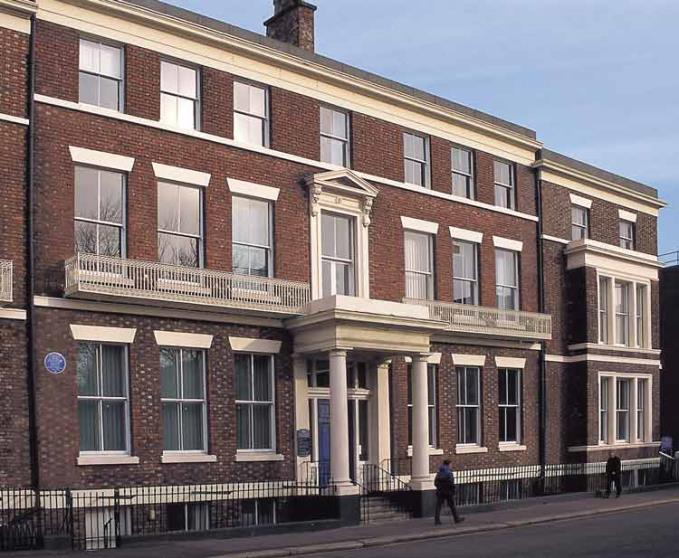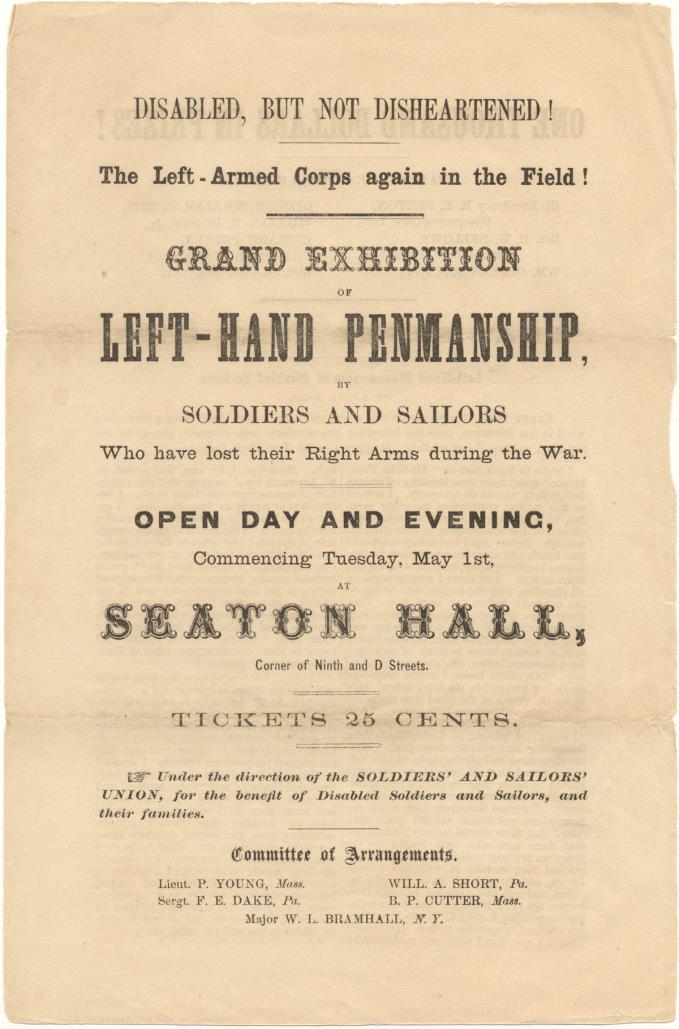A LIVERPOOL University academic who was inspired to study slavery after watching the TV drama Roots, has lured a major exhibition about the American Civil War to Liverpool.
It is the only city in the world, outside the US, to host the event.
The exhibition, Life and Limb: The Toll of the American Civil War, opened today.

Quite fittingly, it is being staged at 19 Abercromby Square, right, one time home of Charles Kuhn Prioleau, the illustrious South Carolina-born merchant and leading financier of the Confederates.
Prioleau once arranged a five day grand bazaar
at St George’s Hall to raise funds for the relief of wounded and imprisoned Confederate soldiers. His motivation began as an attempt to save his business when the cotton trade – crucial to the Lancashire mill owners – collapsed. Later he sent supplies, weapons, and ammunition to the southern states and finally fully crewed warships.
The Georgian building, one of the grandest surviving 19th century houses in the city, is now part of the University of Liverpool estate. To this day it contains emblems and motifs of the Southern States in its décor, such as the Lone Star badge.
Life and Limb..., created by the US National Library of Medicine, has been on a coast-to-coast tour of America.
Thousands of soldiers on both sides of the conflict died in the Civil War, but thousands more survived as a result of groundbreaking, all-or-nothing treatments, such as the development of skilled amputations, given close to the battlefields. Lessons learned were key in the emergence of field hospitals and best practice during future conflicts and wars.
In this show, the perspectives of surgeons, physicians and nurses are richly documented along with the heroism and brutality of battlefield operations and the challenges of caring for the wounded during wartime.
The less-well-known experiences of injured soldiers during the conflict and in the years afterwards are also recorded, as are the stories of disabled veterans and their role as symbols of the fractured nation.

The show's arrival at 19 Abercromby Square (which was later, coincidentally, the address of World War I medical hero Noel Chavasse), is as a result of efforts by St Helens-born history lecturer Dr Stephen Kenny (main picture top).
His research has examined topics such as white thinking about black health, the medical profession’s reliance on the exploitation of enslaved "subjects" and black experience under such pressures.
He said: “I saw this fascinating exhibition and asked if it could be brought to Liverpool, and they
I saw this fascinating exhibition and asked if it could be brought to Liverpool, and they agreed
agreed. It is great to think Liverpool is the only host of this event outside the US, more so because it is being held in the home of a prominent financier of the Confederates during the war.”
The exhibition combines displays shipped from the US with original art, rare books as well as research from both staff and students at the University of Liverpool.
Dr Kenny said: “While the traditional historical view saw medical practice in the war as being near medieval, new research finds abundant evidence of progress and modernisation in medical and public health responses to the conflict – including the establishment of the vast US Army Medical Museum using human specimens harvested from battlefields and field hospitals.
“We are privileged to have original signed copies of landmark volumes (published between 1870 and 1880), which contain vivid colour lithographs and graphic insights into the injuries and trials of soldier-sufferers in the Civil War.”
New work by British artist –and amputee – Angel Martin is being displayed alongside artefacts from battlefield hospitals to deliver a modern, personal visualisation of the exhibition’s themes. A companion book, Life and Limb: Perspectives on the American Civil War, will also be published later by Liverpool University Press.
Life and Limb: the Toll of the American Civil War will run at 19 Abercromby Square, from April 16 until June 20. The show will also be open late for Liverpool Light Night on May 15.
Shot by both sides: the multiple threats of muskets, mumps and measles

MORE than three million soldiers fought in the American Civil War from 1861-1865. More than half a million died, and almost as many were wounded but survived.
Most soldiers, many of whom were no more than boys when they reported for duty, were unprepared for the realities of wartime and the scale of the carnage. They were usually marshaled for service without training, and often stationed miles from where they had grown up. Both sides had predicted a swift resolution to the conflict, and morale plummeted as the fighting dragged on.
New technologies led to new challenges for medics. Rifled muskets fired further and more accurately than older weapons and could be quickly reloaded with the minié ball, a bullet of soft lead invented in the 1840s. The ammunition caused extensive damage as it changed shape on impact, shattering two to three inches of bone and dragging skin and clothing into the wound. The scale of the damage and risk of infection was a major cause of amputations.
Most physicians had a very limited understanding of the importance
of sterilization, and little experience treating the kinds of major cases seen during the Civil War.
It prompted surgeon Julian John Chisholm to observe: "The limbs of soldiers are in as much danger from the ardor of young surgeons as from the missiles of the enemy."
Some severe wounds, particularly those to the stomach, were usually fatal so patients unlikely to recover were often left untreated.
Those lucky enough to keep their limbs - 60,000 lost them - were vulnerable to infectious diseases that spread rampantly in crowded camp conditions.
In fact, yellow fever, smallpox, malaria, and diarrheal diseases took more lives than battlefield injuries. Among those who had not been previously exposed to them, childhood illnesses such as measles, mumps, and diphtheria became a serious threat. Some men never even saw combat, falling so ill as to require immediate hospital care. They perished or recovered alongside the rising numbers of wounded swelling the wards after every battle.
















